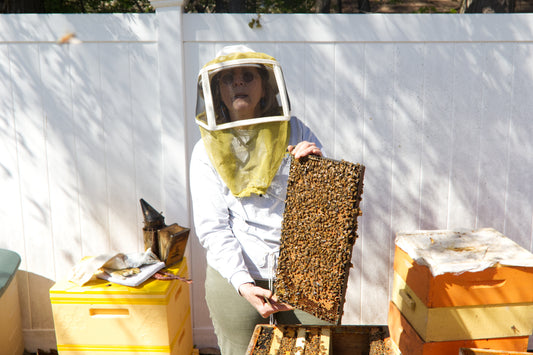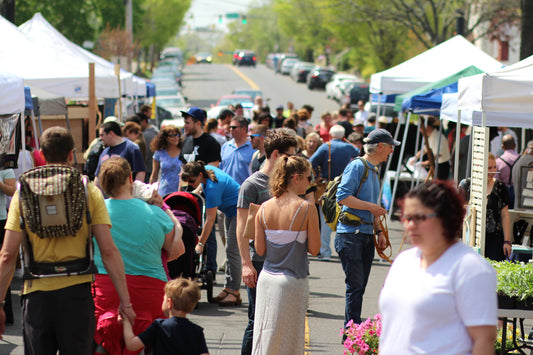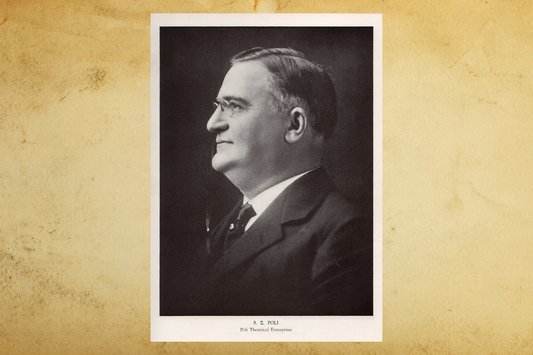Howard el-Yasin sees beauty where most do not. He sees it in blackened banana peels, old shoes and dryer lint. He sees it in coffee wrappers and latex and the dirt you sweep up off the floor.
Then he turns it into art.
Some of his work is currently displayed at The Range at Lotta Studio, where el-Yasin is part of exposed, a group show ending Sunday. In a gallery window, plaster-cast feet hang by strings, like marionettes missing the rest of their bodies. As it turns out, what’s missing is exactly the point. Cast inside old pairs of shoes, some of the feet have such a conspicuous fabric texture that they seem to be made of canvas. Others bear the wrinkles and cracks of their well-worn shoe molds, plus smudges of “gunk” left behind long ago.
sponsored by
The materials—or in some cases, voids—el-Yasin focuses on are “things that we don’t normally think about… in terms of value. I’m focusing on the things that we value least.” In the case of the shoes, that thing is not the shoe itself, but the space into which we put our feet. It’s “something that’s prevalent, but we don’t give it the presence that we could,” he explains.
Upstairs in his West River Arts studio, el-Yasin is experimenting with other discarded materials. A foot-wide strip of off-white latex hangs over a line of string, catching the sunlight from his second-floor window. A stack of foil-backed Café Bustelo wrappers waits beside his sewing machine. He plans to sew them end to end into a “linear installation,” which he can keep adding to, making it different each time he exhibits it.
The act of collecting is a theme of el-Yasin’s work. He’s gathered 500 banana peels and baked each one to preserve it, then bagged and labeled each with the name of the person who ate the banana and gave him the peel—or “skin,” as he calls it. Those meticulously collected and documented skins were recently part of a solo exhibit at Campbellsville University in Kentucky. The peels were suspended from the ceiling at varying heights, and visitors were invited to walk among them, experiencing them up close.
sponsored by
When el-Yasin talks about the “blacks and browns” of the fragile, baked skins—something most of us would throw away without a second thought—he’s talking about sources of quiet elation: “I feel just delight around all of these skins, and I wanted to create a space where other people could get that sense.” That installation, Where Do We Come From? What Are We? Where Are We Going?, also included a rope of dryer lint collected from many sources, which ran from one exhibit space into the next suspended between a pair of poles. “What I like is that I can
It’s easy to imagine this soft-spoken, thoughtful artist as the kind of boy who might have hoarded rocks or bottle caps or any number of treasures, but el-Yasin says he never had space to be a collector until he was an adult. He allows, however, that he might be following—intentionally or not—in the footsteps of his grandfather, who had a business of cleaning out people’s garages and basements and taking their castoffs to the dump. “
Now he has some space to spread out, in the hallway outside his studio and an attic space above. He’s also expanded conceptually. For one recent project, he collected not objects but information, in the form of sound. He recorded people telling stories about their hair—another material that, when discarded, generally loses its value. Another recent piece involved women performing poetry and men responding to it with movement, a way of “
“I’m interested in constructing scenarios to engage people around how we think so that they’ll ask themselves, or they’ll ponder on what the materials mean or how they can impact their lives,” el-Yasin says. “Everything has an impact on something, even things that are discarded. And everything has a life cycle.”
His hope, ultimately, is to help people think differently not only about the lives of objects but about themselves. “I think people will then be more inclined to think about life in a different way…I also think that…when
What el-Yasin will do next seems up for grabs. He’d like to experiment more with sound and with “social engagement,” he says. What’s more certain is that whatever he does, it will be driven by his interest and the materials themselves, not by any sense of a market—an approach made possible by his employment as an administrator at Yale.
“I’m not trying to make
We may not all see art in a shriveled-up banana peel. But el-Yasin’s vision invites us to try.
Howard el-Yasin
Studio Location: West River Arts – 909 Whalley Ave, New Haven (map)
Current Exhibit (Group): Exposed at The Range at Lotta Studio (911 Whalley Ave, New Haven), through Sun 12/3
helyasin@gmail.com
www.howard-elyasin.squarespace.com
Written by Kathy Leonard Czepiel. Images 1 and 3, taken during City-Wide Open Studios 2017, photographed by Dan Mims. Images 2 and 4 photographed by Kathy Leonard Czepiel. Image 5, taken at Campbellsville University in Kentucky, photographed by Azucena Trejo Williams.









